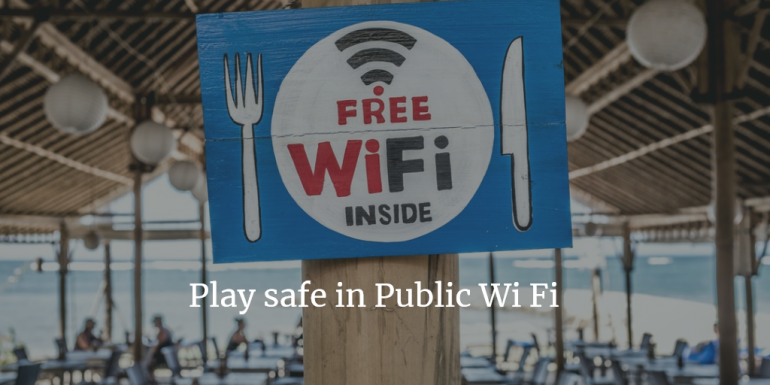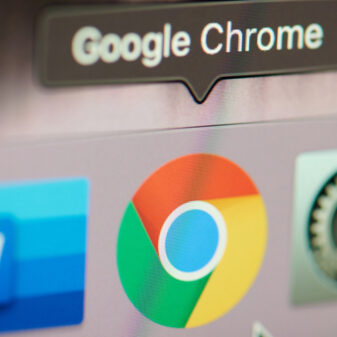Public Wi-Fi can be found everywhere, whether you are heading to a local coffee shop or hotel, malls, airports, etc. In one way or the other, technology seems to have made our lives easier, but at the same time, it also poses a security risk to the personal information available on our laptops and smartphones. The following post sums up on how to surf safely, on any device.
According to ITRC, three out of four respondents said they use free public Wi-Fi. Unfortunately, most people don’t realize that public Wi-Fi isn’t secure even you are using one that requires a password to log in. I mean one cannot say his or her online activities are safe. Still, public Wi-Fi is loved by everyone including hackers.
How Hackers make the most of Public Wi-Fi?
There are basically two types of attacks through which the bad guys can get access to your personal information and steal your identity.
- On the Same network
One of the ultimate objectives of a cyber-criminal is to get connected to a network where multiple users are already connected, making public Wi-Fi networks excellent targets. As soon as he or she gains access to such a network, he can deploy his tactics to take control of all the data and communications taking over this network.
By intercepting data of people on the same network, cybercriminals can easily intercept communications between clients (or users of public Wi-Fi) and the public Wi-Fi router. In addition to this, they can capture and view all the incoming and outgoing data.
- Create a Fake Wi-Fi Hotspot
Another technique is tricking unsuspecting users into joining a fake network put up by the hacker. With this, they can gain easy access of your personal information that could be anything from your social accounts and financial credentials to other sensitive information that may be crucial to your well-being.
As soon as you connect to the fake network, hackers can push malware on your device by sending fake warnings of a system upgrade. Instead of upgrading, they install malware which can broadcast your sensitive information in real-time, including your system’s documents, photos, communication logs, etc.
Steps To Protect Your Crucial Data
- Verify the Network- Hackers are becoming smarter and smarter; it’s better to surf and play smart. Before joining any network make sure you read the network very carefully and ask an employee of the business if the link is legitimate or not. There are chances of hackers setting up fake networks and avoid becoming the victim. When connected to any public network just see whether you need to have sharing preferences turned on or not. Probably Not! Just turn off the file sharing option.
- VPN- VPN (Virtual Private Network) being one of the most secure options around to surf on public networks. It probably helps in keeping information secure when logged on to public networks. It simply encrypts your data traffic and acts as a protected tunnel between the client (browser) and server. This means all the data passing through the tunnel won’t be visible to hackers and they won’t be able to access both information as well as activities you do online.
- Use HTTPS– In case, if you are not okay with VPN, you can still use HTTPS. This means only you can visit only encrypted sites that help in protecting your data from some of the threats outlined above. Can you see HTTPS at the beginning of a website’s address- in simple words; it unveils the fact that the connection between the browser and the web server is encrypted. There is no scope for eavesdropping or tampering.
- Enable Firewall– One of the conventional yet effective methods to avoid unauthorized external access to your system. Of course, it won’t provide complete protection, but it’s a basic setting that should always be enabled. The firewall also protects your device from data-based malware threats. It actively monitors the data packets that come from networks and checks whether they’re safe or not. In case of any malicious act, it gets blocked by the firewall. Usually, non-techies turn off Windows firewall because of the annoying pop-ups and notifications and then just completely forget about it. Never do that! Always keep it enabled.
- Antivirus– For public Wi-Fi, using antivirus can detect malware that might get into your system while using the shared network. Don’t forget to use the latest versions of an antivirus program that is installed on your device. An alert will be shown if any known viruses are loaded onto your device or if there’s any suspicious activity, malicious attack, or malware gets into your system via a network.
Other crucial tips to take into account:
- Always turn off the automatic connection.
- Always use 2-factor authentication – if a hacker obtains your username and password, there is no chance for them to access your accounts.
- Forget network after using public Wi-Fi.
- Don’t run financial transactions over public networks.







